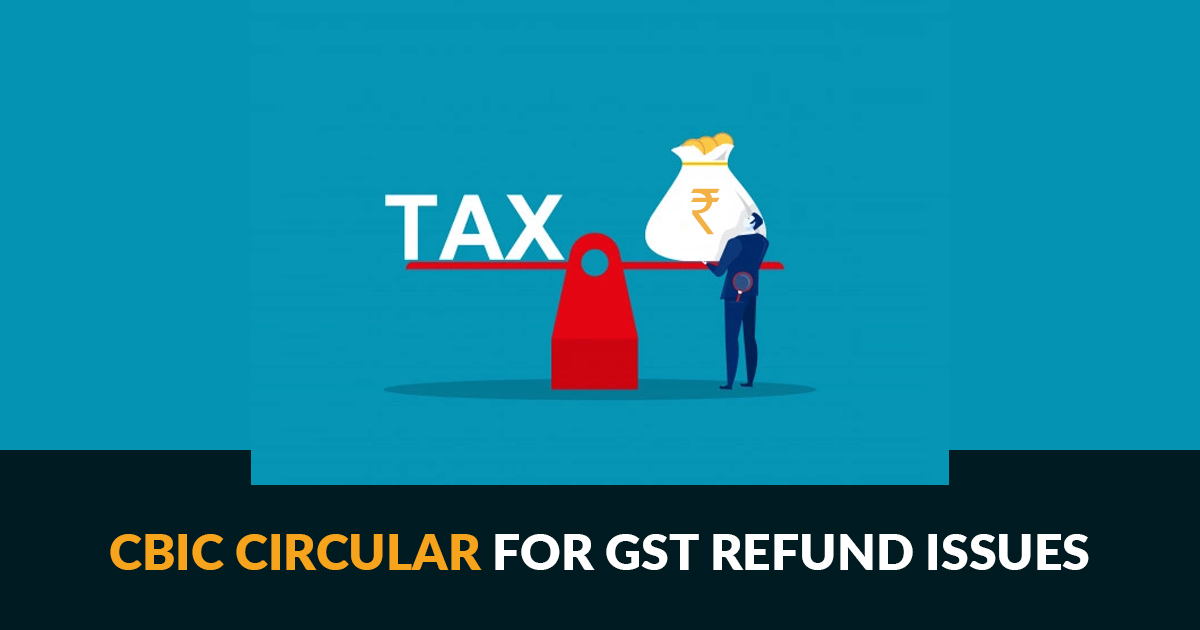
Those people who have the money in the cash ledger to furnish the GST will be able to avail their money post 2 years of the date of filing the tax, the action which makes the flow of cash easier for the businesses. As in the present times, the taxpayers are not able to avail the refunds on the money post to 2 years. The time period for the same has been removed by the government.
In a similar context, the Central Board of Indirect taxes and Customs (CBIC) has provided important explanations. An assessee is needed to furnish the application for the refund to the GST council in 2 years from the concerned date to avail the claim for the GST refund. In basic terms, the concerned date is the payment date of the tax. However, for the exports, it is the date upon which the ship or the aircraft just depart from India.
Beneath GST an assessor needed to furnish the cash in the electronic cash ledger (ECL) which is made on the GSTN portal. The assessee can use the cash which is laid in ECL with respect to their tax liability as per their GST returns.
There are some cases in which the assessee have furnished much more amount in ECL that can not be practised with respect to any tax liability. In that specific duration, the same amount lasts in ECL for exceeding 2 years.
Upon the amount which lasts in electronic cash ledger (ECL), the field officers are not accepting the refund applications by stating that the 2 years has ended and hence these amounts will not be available as the refund to the assessee said the tax expert.
As per the case the CBIC provided with the explanation that the time limit of 2 years is not liable to apply for the refund of the excess balance which lasts in ECL.
“The refund clarifications are useful as the same is likely to improve working capital management for dealers with excess balance in electronic cash ledgers. Such dealers thus far, we’re unable to alternatively use the excess balance in their electronic cash ledgers said the tax expert.”
Tax experts specified that the action shall assist in simplifying the flow of cash of the firms. He mentioned the clarification does not reveal the action is liable to apply for the cases engaged in any issues in the courts.
“The CBIC view would also be beneficial for the ongoing litigations relating to excess payment of tax under various cases such as the amount paid during investigation stages, amount wrongly paid by the taxpayers, levy which later held as unconstitutional by the judiciary. It can be argued that the limitation period will not be applicable in these cases too,”
In the same way, the CBIC indeed mentioned that the taxpayer is subjected to receive the refund of money that lies in ECL because of the TDS or TCS under the GST regime. The TCS can be subjected to apple when a person practices an eCommerce platform to sell the goods. TDS and TCS can be subjected to apply when the business undergoes a dealing within the government.
The tax council does not accept the refund applications concerned to the mentioned accumulation as they justify that the same is not cash furnished through the assessee and hence refund might not be available. The same amount could be used with respect to the tax liability.
Quick Response Code
CBIC indeed mentioned that those who are furnishing the payment outside the supply is in India are not needed to pose the dynamic QR code on their invoices.
“This is because QR code is mandated by the government so that consumers/ recipients of services can pay through digital modes which makes it easy for authorities to track the supplies. But where the recipient of service is outside India, the QR code would not be used for making payments and hence it is good that requirement of printing QR code on such invoices has been done away with, revealed by tax expert.”